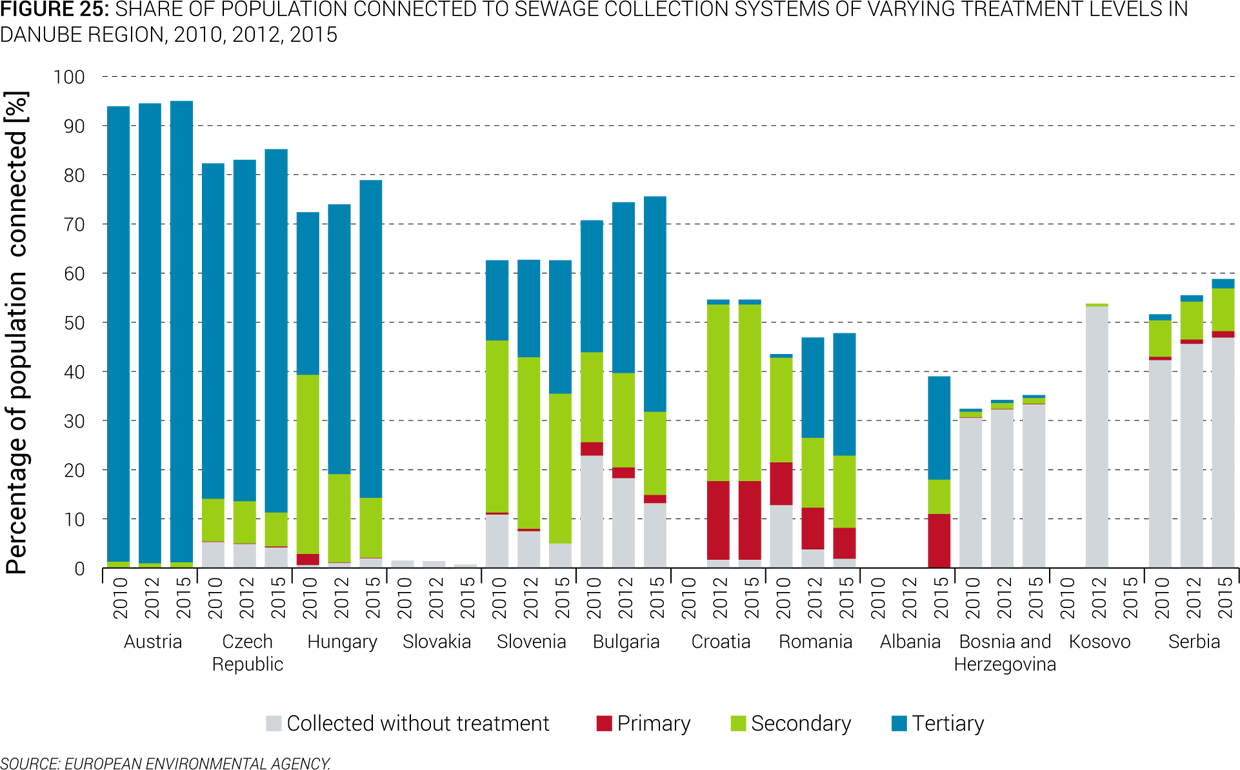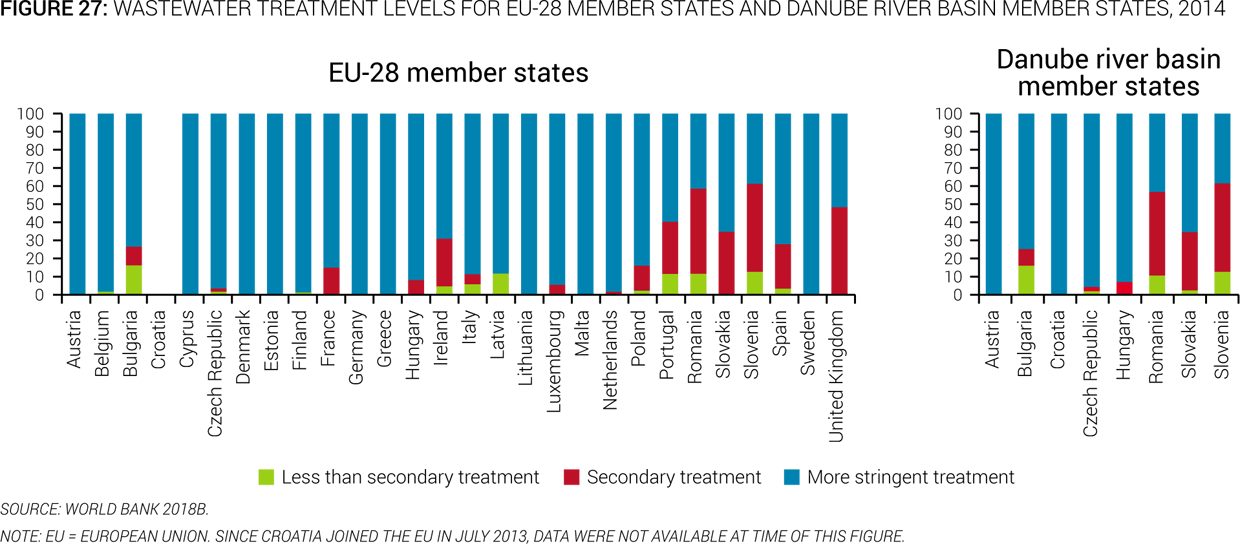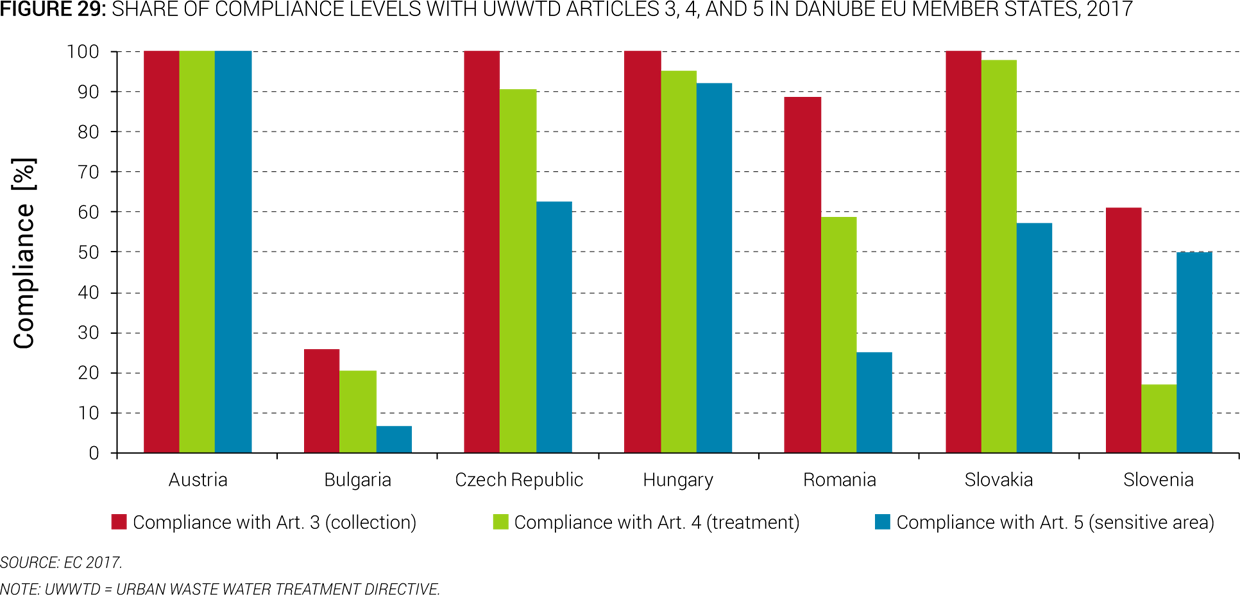C. Wastewater Treatment
53. Over the past five years, the share of population connected to wastewater treatment has increased in EU member states across the Danube region (Figure 25), but there is still significant underinvestment on wastewater management in non-EU and non-candidate countries. Some EU member states (the Czech Republic, Hungary, and Bulgaria) have increased the connection above 70 percent, with two-thirds of the connected population receiving tertiary treatment. Other EU member countries are lagging (e.g., Romania), and their wastewater connection rate has stagnated over the past five years (Slovenia, Croatia). In candidate countries, little progress has been made: wastewater is predominantly collected without being treated, except for Albania. Figure 26 shows the difference in levels of wastewater treatment of agglomerations greater than 2,000 PE in the Danube River Basin for 2011–12.
54. EU countries have committed themselves to comply with wastewater collection targets. They face different deadlines and challenges to reach full compliance with the UWWTD. EU directives require wastewater collection for all settlements with populations above 2,000, although sewage treatment requirements vary by settlement size and sensitivity of the area. Among the EU countries in the Danube watershed, Bulgaria’s and Slovenia’s compliance rates with respect to wastewater collection are only 26 and 61 percent, respectively. Both countries were expected to meet compliance with wastewater collection in settlements with populations above 2,000 by 2015. Romania was expected to meet UWWTD requirements by end of 2018, but its compliance rate regarding collection is below 90 percent and below 60 percent for secondary treatment. Croatia still has until 2023 to close the gap, but needs to start, since only percent of its residents are connected to a public sewer system.
55. Over the past 15 years, wastewater treatment levels have greatly improved due to the region benefiting from very large investments, mostly financed by EU grant funds, but also with substantive co-financing provided by individual countries. The share of wastewater treated according to the UWWTD requirements, in terms of PE treated at secondary and tertiary levels, and through individual and other appropriate systems—among observed Danube Region Basin member states since membership in 2004—continues to rise. It is now reaching 79 percent, although with significant variations between countries. While this evolution shows a major improvement, the Danube Region Basin member states still lag behind the EU-28 average (Figure 27, panels a and b). Compared to older EU member states, the level of UWWTD compliance is significantly lower in the Danube EU member states, indicating a significant gap in wastewater collection (Article 3 of UWWTD), secondary treatment (Article 4), and more stringent treatment (Article 5) of wastewater (Figure 28 and Figure 29). However, in comparison, EU candidate countries or perspective candidate countries from the Danube region (Albania, Bosnia and Herzegovina, Kosovo, North Macedonia, Montenegro, and Serbia) are even farther behind because urban wastewater is still mainly collected without treatment. In these countries, the overall share of the population connected to urban wastewater systems ranges from 35 percent to 59 percent, but most of this collected urban wastewater is not adequately treated.






